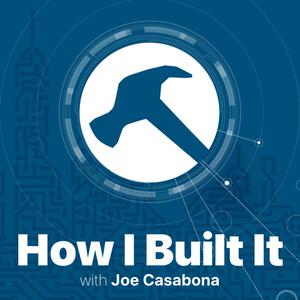
How I Built It - Case Studies & Coaching for Creators and Solopreneurs
Joe Casabona
This one's for all the busy solopreneurs who can't spend more time on their business.
- 25 minutes 43 secondsRebranding my YouTube Channel
There's an old adage in construction that you should measure twice and cut once. The idea being that cutting is a permanent action. If you cut a piece of wood, you can't put it back together. So you should measure where you're cutting, make sure you're measuring it right, and double-check your work before you take that permanent action.
Now on the Internet, things aren't necessarily as permanent. Sure. Things that are online could be online forever. But as far as setting up a YouTube page or a podcast or a website, well, you can change them pretty easily. I just kinda made a decision and I ran with it. And now I'm kind of regretting that decision.But because nothing is permanent on the Internet, I am rectifying that.
Top Takeaways:- When rebranding your YouTube channel, focus on creating a clear and specific mission for your content. This will help the YouTube algorithm understand and recommend your content to the appropriate audience.
- Regularly review your analytics to see which videos are performing well and update those thumbnails and descriptions to optimize visibility. The title and thumbnail have the biggest impact on click-through rates.
- Consider the performance of your top videos and use that information to guide your content strategy. If specific topics or types of content are consistently performing well, consider creating more content around those topics to leverage your existing success.
Sponsors:
- Check out Liquid Web
- Memberful: Get your free trial for at memberful.com/streamlined
29 April 2024, 6:00 am - 44 minutes 47 secondsCan AI Change What and How We Repurpose With Greg Wasserman
I’m currently reading Stories that Stick by Kindra Hall. In it, she mentions that “story” has become such a common term that people use it for everything, even if it’s not a story.
I feel the same thing has been done to the term “repurposing.” See, when you repurpose something in the real world, you take it, you make changes to it, and you give it new life. You don’t just lop a piece off of it and say you’ve repurposed it.
But that’s what many people consider repurposing today. “I’m going to clip 1 minute of this 60-minute conversation and call it repurposed.”
That’s why I’m excited to have Greg Wasserman on the show today. He helps us reframe repurposing, and talks about how AI can help us repurpose properly – and while I don’t agree with everything he says, I like exploring different ideas.
Top Takeaways- Repurposing content isn’t just turning current content into other content. It’s taking conversations and turning them into content, products, and more.
- Get creative! Greg uses his coaching calls and repurposes them into courses. How can you take conversations you’re having and leverage them to get something tangible for your business?
- When it comes to leveraging AI, consider your creative comfort. Some people are more comfortable writing. Some feel better talking it out. Integrate AI into your current and best process!
Show Notes
- Greg Wasserman
- lu.ma
- Discovering What Customers Really Want with Georgiana Laudi
- Why Podcast Interviews are a Content Goldmine with Tom Schwab
- Grammarly
- Castmagic.io
Sponsors:
- Check out Liquid Web
- Memberful: Get your free trial for at memberful.com/streamlined
22 April 2024, 6:00 am - 2 minutes 24 secondsHow I Built It is now Streamlined Solopreneur!
After 8 years, I'm changing the name of this podcast from How I Built It to Streamlined Solopreneur. Here's why.
You can learn more at https://streamlined.fm
★ Support this podcast ★17 April 2024, 11:23 am - 50 minutes 42 secondsBuilding Native Apps using Nocode as a Team of One with Karla Fernandes
The first documented parachute jump happened in the late 1700s, when André-Jacques Garnerin just from balloons at “only” 2000 feet. He no doubt prepared for this moment, testing his parachute and doing everything he could to mitigate risk. Today, skydiving is a sport and a recreational activity, with a lot of safety measures and technology to further mitigate risk.
Why am I telling you this? Because human beings are, by and large, risk-averse…so doing everything we can to reduce it is incredibly important. When it comes to launching a business, it, much like skydiving, is much less risky than it was 200 years ago.
Part of that is the ability to create applications – and therefore launch software-based businesses – without code. That’s exactly what Karla Fernandes is going to talk to us about today. And she should know. She’s launched over a dozen native apps, without writing a single line of code.
Top Takeaways
- When evaluating business ideas, prioritize those that solve user problems and gauge interest through pre-sales and feedback from friends, ensuring a user-centric approach and viability.
- Use no-code tools for faster product development, which allow you to validate, test, and iterate quickly.
- With no code solutions, you can test multiple product ideas simultaneously without significant investment, helping to hedge your bets and validate ideas quickly and affordably.
Show Notes
Sponsors:
- Check out Liquid Web
- Memberful: Get your free trial for at memberful.com/streamlined
15 April 2024, 6:00 am - 1 hour 2 minutesFrom Doubt to Determination: Pushing Through the Podcasting Dip [Podcraft]
Today we have a good old fashioned feed drop from my friends at The Podcast Host, and their show, Podcraft.
What really makes someone a successful podcaster? Is it a certain number of episodes, downloads, or reviews? Is it whether content creation has become their full-time job? Or could it be because they’ve been recognised with a prestigious award?
That's what they'll discuss on this episode, and every episode this season.
I hope you enjoy!
Check out Podcraft wherever you listen.
★ Support this podcast ★11 April 2024, 12:00 pm - 26 minutes 41 secondsMy Be Everywhere Strategy was an Incredible Failure (Which is Good)
I love shuffling poker chips. In fact, I love playing poker…but there’s a fallacy in gambling that can get you into a lot of trouble. It’s the fallacy of sunk cost. Basically, you think you should continue what is ultimately a losing battle because you’ve already invested some amount of money in the pot.
The same thing can be applied to lots of stuff. Have you ever finished a book or a movie you didn’t like just because you started it? That’s the fallacy of sunk cost.
And I’m happy to say that 4 months into 2024, I successfully avoided that fallacy with something that, in January, I was all-in on: my “Be Everywhere” Strategy.Show Notes
- My Experiment with Substack and Being “Everywhere”
- Taking a bet on Substack’s Network Effect with Nathalie Lussier
- Why I’m Killing my Membership
- Podcast Workflows
Sponsors:
- Check out Liquid Web
- Memberful: Get your free trial for at memberful.com/streamlined
8 April 2024, 6:00 am - 58 minutes 39 secondsDiscovering What Customers Really Want with Georgiana Laudi
I remember touring a Murano Glass factory on my honeymoon to Italy. Basically as soon as we stepped foot into the place, a man giving us the tour had us pegged. So when it came time to sell us something, he didn’t just ask us if we wanted to buy some glass art.
He painted us a picture of a unique conversation piece that we can put in our home, to help us remember this time at the beginning of our marriage. To turn into a family heirloom for when we have kids and grandkids. He wasn’t selling us glass. He was selling us a vision of our future. And it worked like gangbusters.
So how can we do that for our customers? That’s what Georgiana Laudi is here to talk to us about. She is the co-author of Forget the Funnel, a book that had a profound effect on my business – and today, we’re talking all about jobs to be done, research, and capturing the voice of our customers.
Top Takeaways- Understand the "Jobs to Be Done": Customers aren't buying products themselves, but rather the solutions the products offer. Identify the specific jobs your product or service helps customers accomplish.
- Capture the Voice of the Customer: Conduct customer interviews to capture actual language and patterns from customer conversations.
- Continuous Customer Research: Regularly conduct foundational research every 6-12 months and ensure it's continually validated based on industry shifts.
Show Notes
- Georgiana Laudi
- Georgiana on Forget the Funnel
- What are Jobs to be Done?
- Demand Side Sales
- Forget the Funnel
- How to be a Scrappy Researcher (to Actually Sell Products) with Becky Pierson Davidson
- Copyhackers
- Forget the Funnel Podcast
Sponsors:
- Check out Liquid Web
- Memberful: Get your free trial for at memberful.com/streamlined
1 April 2024, 6:00 am - 26 minutes 37 secondsTools Check-in: What am I using so far in 2024?
My grandfather came to the United States from Italy in 1949 and worked in New York City for much of his life — primarily in construction. For as long as I can remember, he had this big, metal toolbox. And when he passed away, he gave it to me, and I still have and use it to this day.
Pop had that toolbox for decades. When he found something that worked for him, he held on to it and took care of it. There’s a hammer in there that has to be as old as I am.
And when you think about it, the hammer is a pretty good analogy for our digital tools. It’s a basic device, but there are countless variations, purpose-built for specific tasks. Much like a task manager or notes app, you mostly know what you’re getting — but you may want something a little more specialized for your needs.
While you don’t want to change tools all the time, it is good to evaluate your toolset from time to time. So I thought I’d check in and share the tools I’m using.
Show Notes- Tools Check-in: What am I using so far in 2024?
- Tools for Podcasters (Podcast Workflows)
- When Do You Burn All of Your Processes Down and Start Over?
- My Stream Deck: How I’ve Configured it for Maximum Productivity and Production
- Become a Member
- Tools mentioned:
Sponsored by Liquid Web
Join my FREE Newsletter, Podcast Workflows
★ Support this podcast ★25 March 2024, 6:00 am - 57 minutes 50 secondsRethinking Our Relationship with Time and Money with Khe Hy
I abhor hustle culture. Telling someone to work a full-time job, then go home and work more all for some goal that keeps changing is, in my opinion, how to lead an empty life. I’m worried that, even in 2024, we continue to fetishize making money and hustling. So I decided to take it to Khe Hy.
Khe, if you don’t know, worked hard – as he puts it, he hustled for 10 years of his life. He worked on Wall Street, becoming the equivalent of a junior partner in a law firm, and earning a 7-figure salary. But he left that job, and he’s built a life he enjoys.
But he makes it very clear: sometimes you do need to hustle. Life is full of seasons – and recognizing that seasonality is important. We cover a ton of topics in our short time.
Top Takeaways- There are seasons to life. It’s important to recognize that and adjust for the season you’re in.
- If you’re working to eventually gain more time, ask yourself if you can cut some costs and gain that time now. Sure, someone could pay you $10,000 for 5 hours of data entry – but do you want to do data entry, or would you rather have those 5 hours free?
- There’s a difference between revenue and profit. Most people share top line revenue, but what are they really taking home?
Show Notes
- Khe Hy
- Revenue Hub's interview with Tiago Araújo
- RadReads
- The magic of doing $10,000 per hour work
- Are you a Post-Achievement Professional?
Sponsors:
- Check out Liquid Web
- Go to http://porkbun.com/HowIBuiltIt24 to get $1 off your next desired domain name at Porkbun!
18 March 2024, 6:00 am - 53 minutes 8 secondsAligning Your Values to Set the Right Goals with Tanya Alvarez
What do you want your life to look like? Last week I talked about how not being intentional is kind of like driving a car without the GPS. But goal setting without knowing what you want – that’s a bit like driving a car without having a destination in mind.
Well, today, Tanya Alvarez is going to help us figure out the destination – you can think of her as your own GPS. And much like that Google Maps car, she’s well-traveled and has a ton of experience to back up her advice – from funding her first startup with credit cards to completing a Half Ironman and traveling to 42 countries, she’s done it all. And now she wants to help you do it too, by sharing her system for prioritizing your goals.
Top Takeaways- Take the time to define and rank your personal values. Understand how these values shape your goals and prioritize them to ensure alignment with your desired outcomes.
- View your goals as hypotheses and break them down into manageable time frames. This approach provides flexibility for adjustments while promoting focused and effective work periods.
- When faced with multiple business ideas or tasks, evaluate them based on effort, impact, and activity categories. This can help you understand your capacity and prioritize tasks effectively.
Show Notes
Sponsors:
- Check out Liquid Web
- Go to http://porkbun.com/HowIBuiltIt24 to get $1 off your next desired domain name at Porkbun!
11 March 2024, 6:00 am - 35 minutes 6 secondsWhy I’m Killing my Membership
Not being intentional in your business is a bit like getting in your car and driving without the GPS. Sure…you generally know where you’re going. But what if a road is closed? What if there’s avoidable traffic? A GPS can help you navigate around those things.
When you’re intentional about your business, you go from wandering aimlessly, taking any work that makes ends meet, to setting and achieving your goals. And today, I’m going to talk about how I’m being more intentional in my business, and why that decision has led me to end my membership.
Top Takeaways
- Take the time to identify tasks that provide the best returns on your time investment. Focus on work that aligns with your income goals and brings you closer to achieving your business objectives.
- Take control of your schedule by tracking your time and evaluating the effectiveness of your tasks. Use tools like time tracking apps to make data-driven decisions and maximize your productivity.
- Reflect on your business goals and values, and make decisions that align with them. Ensure that your business endeavors are in sync with what matters most to you and contribute to your overall happiness and success.
Sponsors:
- Check out Liquid Web
- Go to http://porkbun.com/HowIBuiltIt24 to get $1 off your next desired domain name at Porkbun!
4 March 2024, 7:02 am - More Episodes? Get the App
- https://howibuilt.it/
- en-us
Your feedback is valuable to us. Should you encounter any bugs, glitches, lack of functionality or other problems, please email us on [email protected] or join Moon.FM Telegram Group where you can talk directly to the dev team who are happy to answer any queries.
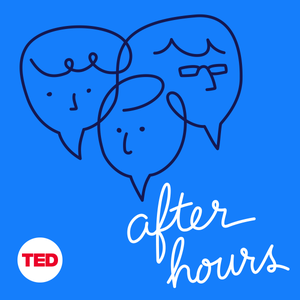 After Hours
After Hours
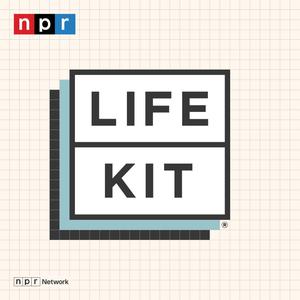 Life Kit
Life Kit
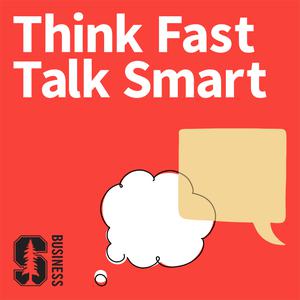 Think Fast, Talk Smart: Communication Techniques
Think Fast, Talk Smart: Communication Techniques
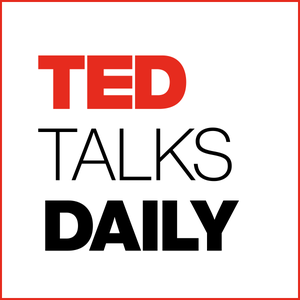 TED Talks Daily
TED Talks Daily
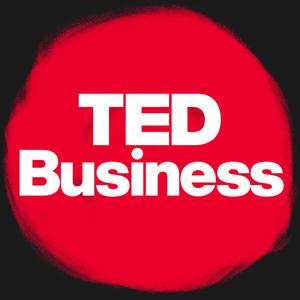 TED Business
TED Business
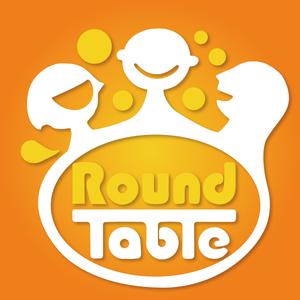 Round Table China
Round Table China